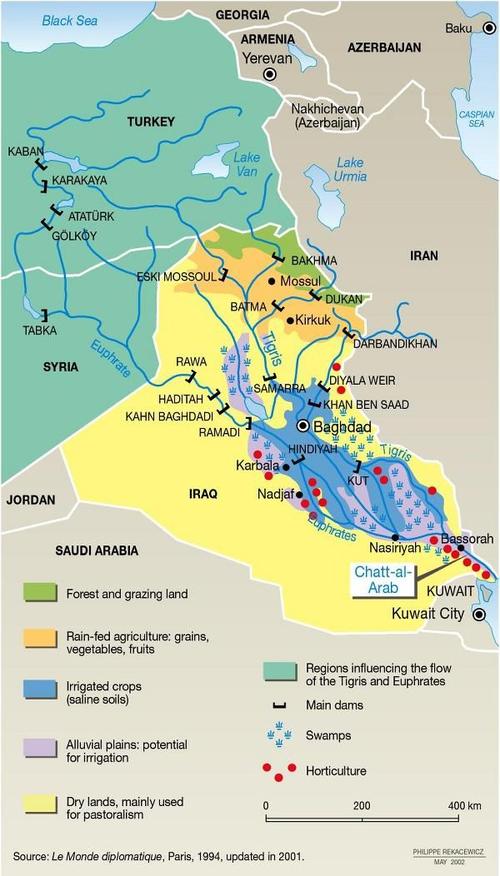Hydro-economic modelling in the Euphrates-Tigris Region
Rationale
The four riparian countries in the Euphrates and Tigris Region – Iran, Iraq, Syria and Turkey – recognize that rapid population growth and economic development will increase the demands for water for energy production, food production, industry and domestic use at the regional level, while ecosystem goods and services need to be maintained and/or
restored. Hence, the already high pressure on the freshwater resources in the region will increase unless radical measures to generate more value from the existing water resources for all the riparian countries are implemented. For these reasons, a hydro-economic model, populated with publicly available data, was created to analyze the potential benefits of cooperative actions in water management.
Description
This hydro-economic modelling exercise was carried out in four steps. First, regional baseline data on land use and hydrology were established and a conceptual hydrological model with 13 sub-basins was created. Remotely sensed data was used where possible, allowing for replicability and validation of data across a large and data scarce region. It was complemented with data from other publicly available sources, such as the United Nations. Second, the economic values of irrigated agriculture and hydropower were estimated for each of the 13 sub-basins, so that comparisons could be made regarding the marginal benefits of the use of the water saved. Third, a hydro-economic model was constructed to analyze the marginal benefits from water use efficiency (WUE) improvements. The model allows for the simulation of different management options based on WUE improvements and allocation of the water saved to additional productive water uses. When simulating increased WUE in irrigated agriculture, the model demonstrates a significant increase in marginal benefits by using the water saved for additional irrigated agricultural production or hydropower generation in all sub-basins. Fourth, the project team interacted throughout the study with a reference/observer group consisting of government representatives from Iran, Iraq, Syria and Turkey and representatives from universities and research centers in the region. The reference/observer group identified a set of cooperative options based on the modelling results that can be explored in subsequent collaborative work.
Lessons learned
- A hydro-economic model used with internationally recognized data can be used to initiate cooperative activities and start discussions on joint decision-making regarding transboundary water resources
- Shared benefits can be generated for all riparian countries through joint management of transboundary waters as a common resource
- Before benefits can be generated from cooperative action on water resources, a joint analysis of internal and external barriers must be carried out and strategies to overcome them must be developed. Barriers to cooperation, as identified by the reference/observer group, included low economic growth, social welfare issues and tensions from former civil strife.
Replicability
This study has demonstrated that it is possible to apply hydro-economic modelling even in regions where hydrological and economic data are scarce. However, a replication of this study in an area with better access to data will yield a more precise and accurate model.
(GWP 2013)
